In my random travels across the internet today, I’ve stumbled on an immensely talented sculptor with a great name and an all-too-brief life. Given the attention a certain Drowned Bugatti has gotten from this blog, I figure it’s only fair another Bugatti get some love too.
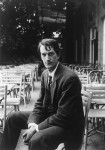 Born in 1884, Rembrandt Bugatti was the car manufacturer Ettore Bugatti’s brother. His father, Carlo, a successful Art Nouveau furniture and jewelry designer, encouraged both Rembrandt and Ettore to work with their hands in his workshop from the time they were 10 years old.
Born in 1884, Rembrandt Bugatti was the car manufacturer Ettore Bugatti’s brother. His father, Carlo, a successful Art Nouveau furniture and jewelry designer, encouraged both Rembrandt and Ettore to work with their hands in his workshop from the time they were 10 years old.
His family moved in some pretty rarified artistic circles. They were close friends of composers Giacomo Puccini and Leoncavallo. His uncle was the Italian painter Giovanni Segantini, and it was he who suggested the name “Rembrandt” for his infant nephew. It was family friend and famous Russian sculptor, Prince Paolo Troubetzkoy, who introduced Rembrandt to modeling and moulding with plasticine, a clay-like plaster that doesn’t dry.
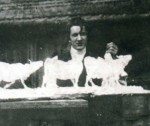 His first fully developed sculpture was a group of four cows, “Return to the Pasture” (ca. 1900-1901). From then on, his parents encouraged and supported him to develop his talents and become a professional sculptor.
His first fully developed sculpture was a group of four cows, “Return to the Pasture” (ca. 1900-1901). From then on, his parents encouraged and supported him to develop his talents and become a professional sculptor.
In 1900 he studied at the Milan Academy of Arts, but by then–at just age 16–he was already a highly accomplished sculptor with his own distinct style. His favorite subjects at this time were domestic animals. The earliest extant bronze is a lowing cow he made in 1901, now in a private collection. Within two years he made a name for himself and had exhibited his sculptures in galleries in Milan, Turin, and Venice.
 In 1903 he moved with his father to Paris where he was accepted in the Société Nationale des Beaux-Arts. It was at Paris’ national zoo in the Jardin des Plantes that he encountered his first exotic animals. Walking Panther, now in the Cleveland Museum of Art, was one of his first wild subjects. Panthers, lions, elephants, deer, wolves, all captured his imagination.
In 1903 he moved with his father to Paris where he was accepted in the Société Nationale des Beaux-Arts. It was at Paris’ national zoo in the Jardin des Plantes that he encountered his first exotic animals. Walking Panther, now in the Cleveland Museum of Art, was one of his first wild subjects. Panthers, lions, elephants, deer, wolves, all captured his imagination.
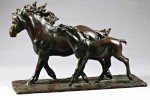 Although he sculpted the human body as well — there’s a great selection of his plaster casts including many human forms at the Musée d’Orsay in Paris — it was his wild beasts that he become known for. Unlike his predecessors in the field, he didn’t depict them in ferocious combat. His wild animals were often individuals in movement or at rest, sometimes family groups or pairs just going about their daily lives.
Although he sculpted the human body as well — there’s a great selection of his plaster casts including many human forms at the Musée d’Orsay in Paris — it was his wild beasts that he become known for. Unlike his predecessors in the field, he didn’t depict them in ferocious combat. His wild animals were often individuals in movement or at rest, sometimes family groups or pairs just going about their daily lives.
In Paris he met A. A. Hébrard, a gallery and foundry owner who put on his first French show in 1904. Hébrard became a mentor and second father to him, and throughout his career even when he left Paris Rembrandt Bugatti sent his models back to Hébrard for bronze casting. He also showed his sculptures at Hébrard’s gallery every year.
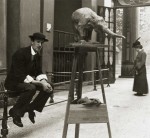 It was when he moved to Antwerp in 1907 that his wild animal sculptures reached their fullest flower. Antwerp’s world-renowned zoo would become something of a muse to him. He would spend days watching the animals, freehand modeling what he saw in plasticine and plaster. He never made a quick sketch and then worked on the sculpture in his studio. If he wasn’t able to capture what he was going for while observing the animals, then he destroyed the model and started again the next day.
It was when he moved to Antwerp in 1907 that his wild animal sculptures reached their fullest flower. Antwerp’s world-renowned zoo would become something of a muse to him. He would spend days watching the animals, freehand modeling what he saw in plasticine and plaster. He never made a quick sketch and then worked on the sculpture in his studio. If he wasn’t able to capture what he was going for while observing the animals, then he destroyed the model and started again the next day.
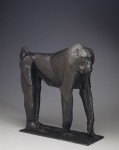 His style continued to evolve. In 1910 his forms moved from a more naturalistic sketch approach to an angular, proto-Art Deco, almost Cubist, geometric style.
His style continued to evolve. In 1910 his forms moved from a more naturalistic sketch approach to an angular, proto-Art Deco, almost Cubist, geometric style.
By the early 1910s, his exclusive contract with the Hébrard Foundry had been unchanged for 8 years. He made very little money and suffered terribly from loneliness and depression. He wrote touchingly to his brother Ettore and his wife asking for money and for good thoughts, but Ettore was just starting the auto manufacturing business that would make their name a cultural icon so he didn’t have much money to spare and he didn’t realize how destitute Rembrandt really was. Rembrandt wrote in his letters that the sole happiness in his life came from a good day’s work.
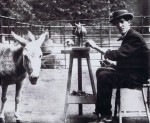 Then came 1914 and the war. The animals at the Antwerp Zoo were all killed and a military hospital set up on the grounds. Rembrandt was devastated. He had been close with the keepers and had established a genuine bond with the animals.
Then came 1914 and the war. The animals at the Antwerp Zoo were all killed and a military hospital set up on the grounds. Rembrandt was devastated. He had been close with the keepers and had established a genuine bond with the animals.
He volunteered as a stretcher bearer at the Red Cross Military Hospital there in August of 1914. Plunged into a deep depression and completely broke, in December of that year he moved to Milan to stay with family. He put on one exhibit there, but remained in dire financial straits, and to add injury to insult, he became ill with the beginnings of tuberculosis.
 In December of 1915 he moved back to Paris to stay with his parents, but he found the prospect of depending on them utterly unbearable. In January of 1916, he turned on the gas in his studio and committed suicide. He was 31 years old.
In December of 1915 he moved back to Paris to stay with his parents, but he found the prospect of depending on them utterly unbearable. In January of 1916, he turned on the gas in his studio and committed suicide. He was 31 years old.
His brother Ettore strove to keep his work in the public eye, even choosing one of his early Antwerp works, a rampant elephant, as the hood ornament for his most exclusive, most expensive car ever: the Bugatti Royale, a model so exclusive that he ended up making only 6 of them and selling only 4 of those. The Bugatti Royale is the Holy Grail of car collectors.
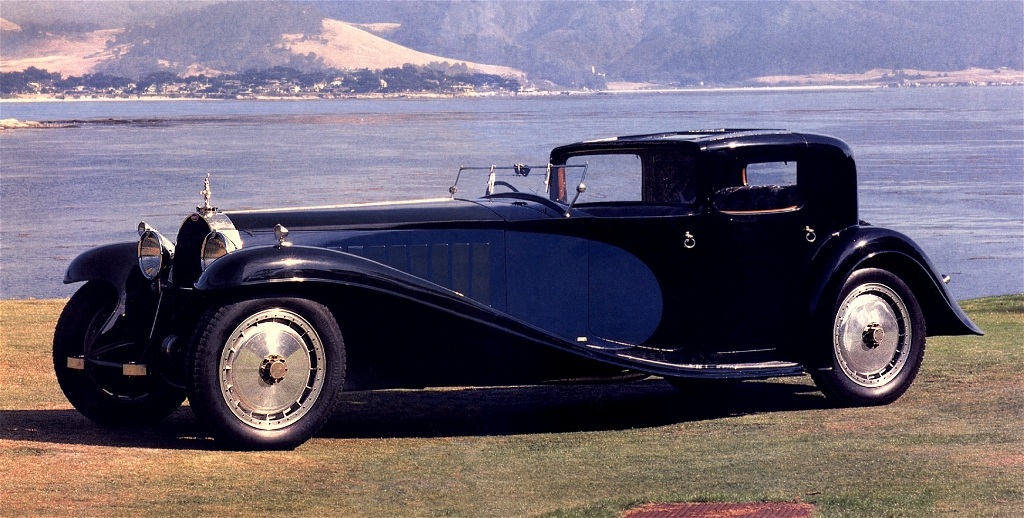
Rembrandt Bugatti sculptures are now worth almost as much as those rarest of cars. A cast of his 1910 bronze Babouin Sacré Hamadryas sold at Sotheby’s in 2006 for $2.56 million.
To see more of Bugatti’s pieces, please check out this beautiful virtual collection.